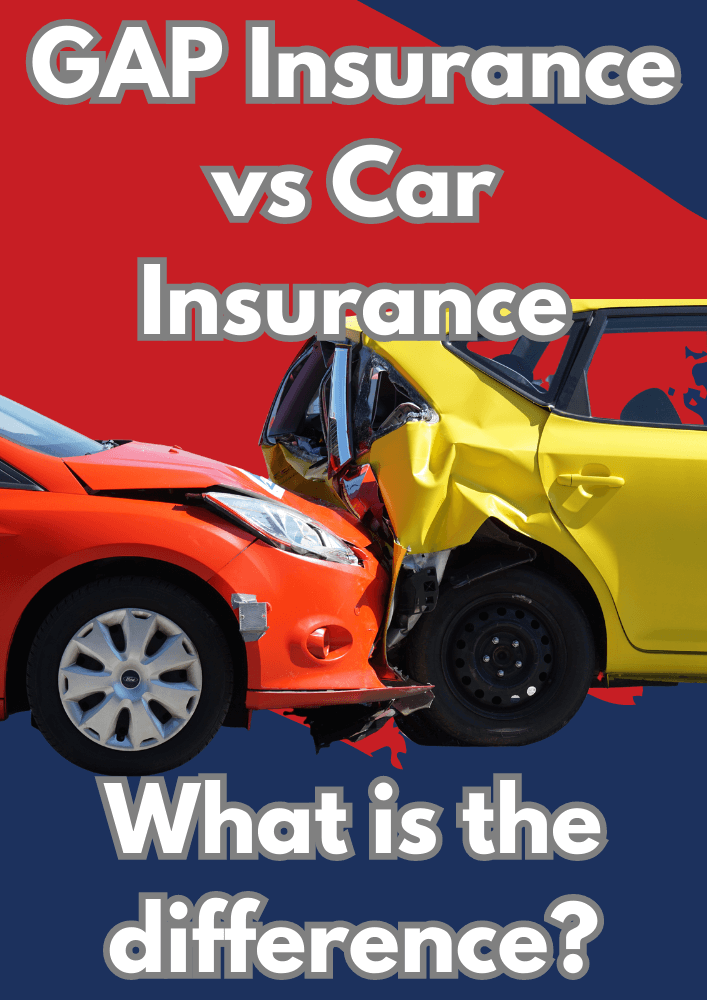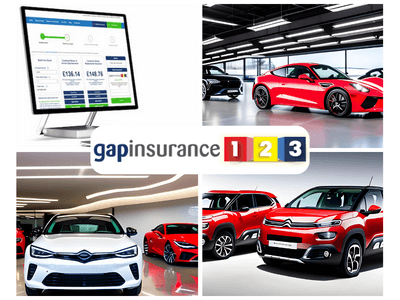Call Monday-Friday 9am - 6pm Closed Saturday & Sunday
GAP Insurance vs Comprehensive Car Insurance What's the difference?
When you are looking at the best way to protect your car, two terms often stand out: GAP Insurance and Comprehensive Car Insurance for your vehicle.
Both can be essential components of a complete car insurance package, especially in the UK market, where regulations and consumer needs are unique.
This article aims to explain these two types of insurance, providing a detailed comparison and insights for the UK car driver.
Whether you're purchasing a new car, considering a change in insurance, or simply seeking to understand your current policy better, this guide is for you.
Table of Contents
Common Scenarios Where Comprehensive Insurance is Useful
Types of Car Insurance Coverage
Comparison Between GAP and Comprehensive Insurance
How to Choose the Right Insurance
GAP Insurance
Definition and Overview
Guaranteed Asset Protection (GAP) Insurance is a specialised type of insurance designed to cover the financial 'gap' between the actual cash value of a vehicle and the amount still owed on its finance or lease.
In the UK, this insurance has become increasingly popular, especially among those who purchase new or expensive cars.
How GAP Insurance Works in the UK
GAP Insurance kicks in if your car is stolen or written off and declared a total loss. It covers the difference between what your car insurance company pays out (based on the car's current value) and what you originally paid for the vehicle, its value at the start of the policy, what you still owe on finance or the replacement cost depending on which type you have.
This is particularly useful for a brand new car, which can depreciate quickly, a leased vehicle or a new or used car taken on finance.
GAP Insurance Benefits and Limitations
Benefits:
- Protection against financial loss if the car is written off.
- Peace of mind, It provides an additional payment on top of your motor insurance settlement.
- Flexibility in coverage options to suit different needs and budgets.
Limitations:
- Not suitable for all vehicles, especially older ones.
- Additional cost on top of regular insurance.
- Only works if your comprehensive motor insurance pays out too.
Common Scenarios Where GAP Insurance is Useful
- Newly Purchased Cars: New cars depreciate quickly, and GAP Insurance can cover the difference between the purchase price and current value.
- Leased Vehicles: GAP Insurance can protect against potential financial loss if you're leasing a car.
- Cars with High Depreciation Rates: Some cars lose value faster, making GAP Insurance a wise investment. 
Types of GAP Insurance
Return to Invoice GAP Insurance - This is the most common level of GAP Insurance coverage offered by motor dealers and online providers alike. It is designed to cover between the car insurance settlement, when the vehicle is written off, back to the original invoice price paid for the vehicle.
Vehicle Replacement GAP Insurance - This is possibly the most comprehensive coverage for GAP Insurance. However, it is rarely available from motor dealers. It is designed to cover between the market value settlement from your car insurance provider and the cost of the equivalent replacement car.
That means if the cost of the equivalent vehicle increases from when you first bought it, then this increase is also covered by a VRI GAP Insurance policy.
Contract Hire & Lease GAP Insurance - This is specifically designed for lease agreements where you have no option to buy the car at the end. This type of GAP policy can cover the shortfall between the car's market value at the point of total loss and the settlement required to clear your lease.
Agreed Value GAP Insurance - This is designed more for private purchases, not from motor dealers. As a VAT invoice for the purchase is unavailable, the value covered is based on the Glass's Guide retail value of the car at the time of the policy purchase. Therefore this type of GAP Insurance (also known as Return to Value GAP Insurance), can cover between the motor insurer settlement and the agreed value at the time of the policy purchase.
Finance GAP Insurance - a rarely used type of GAP Insurance these days, and it is similar to Lease GAP Insurance in that it can cover a shortfall on a finance agreement. However, Finance GAP (and its specialised version, Negative Equity GAP Insurance) is generally used on HP or PCP finance agreements. It is not used because Return to Invoice GAP is similar in price and is often a 'combined' policy that includes Finance GAP cover anyway.
Comprehensive Car Insurance
Definition and Overview
Comprehensive Insurance, often referred to as "full coverage," goes beyond basic third-party insurance. It covers damages to your vehicle caused by events other than collisions, such as theft, vandalism, fire, or natural disasters. In the UK, this type of insurance is common and offers a wide range of protections.
How Comprehensive Insurance Works in the UK
Comprehensive Insurance in the UK is more than just collision coverage. It includes damages to your vehicle and personal injuries and may even cover third-party liabilities, depending on the policy. It's a broad coverage that offers peace of mind in various unexpected situations.
Effectively fully comprehensive car insurance can either pay to repair your car or pay you a settlement for the car's market value if they deem it beyond economic repair.
Benefits and Limitations
Benefits:
- Wide-ranging coverage, including theft, vandalism, and natural disasters.
- Personal injury protection, covering medical expenses.
- Optional add-ons like windshield and glass coverage, and roadside assistance.
Limitations:
- Generally higher premiums compared to more basic, third-party coverage.
- May include unnecessary coverage for some drivers.
- An excess normally applies, meaning you'll pay a portion of the claim.
Common Scenarios Where Comprehensive Insurance is Useful
- High-Value Vehicles: If your car is expensive, Comprehensive Insurance protects your investment.
- Areas Prone to Theft or Accidents: Living in a high-risk area makes Comprehensive Insurance a wise choice.
- Owners Seeking Complete Peace of Mind: If you want extensive protection, Comprehensive Insurance is the way to go.
Types of Car Insurance Coverage
Comprehensive Car Insurance
Fully Comprehensive Car Insurance is the highest level of coverage available, providing protection for a wide range of incidents. It covers damages to your vehicle caused by events other than accidents, such as theft, vandalism, fire, or natural disasters.
In addition to covering third-party liabilities, it often includes personal injury protection and may offer optional add-ons like windshield and glass coverage or roadside assistance.
Essentially, it's an all-encompassing policy that protects both you and your vehicle, regardless of who is at fault in an accident. 
Third Party, Fire and Theft Car Insurance
Third Party, Fire and Theft Insurance is a mid-level coverage option that goes beyond basic third-party protection. It covers damages to other people's property and injuries to others caused by an accident that you're responsible for.
Additionally, it provides coverage for your vehicle if it's stolen or damaged by fire. However, it does not cover damages to your vehicle in the event of a collision or other accidents, making it a more budget-friendly option than Comprehensive Insurance.
Third-Party Car Insurance
Third-Party Car Insurance is the most basic level of coverage and is often the minimum required by law in many jurisdictions, including the UK. It covers liabilities for injuries to other people (including passengers) and damage to other people's property resulting from an accident that you're responsible for.
It does not cover any damages to your own vehicle or injuries to yourself. This type of insurance is typically the most affordable option but offers the least protection, making it suitable for older vehicles or drivers who want to meet legal requirements at the lowest cost.
Comparison Between GAP and Comprehensive Insurance
Key Differences
- Coverage Scope: GAP Insurance covers the financial gap in car value, while Comprehensive covers physical damages and more.
- Cost: Comprehensive car insurance is generally more expensive due to its broad coverage.
- Applicability: GAP Insurance is often suitable for new or financed cars, whereas Comprehensive is more universally applicable.
Similarities
- Both provide protection beyond standard third-party insurance.
- Both can be customised to fit individual needs and preferences.
- Both are widely available from various insurance providers in the UK.
How to Choose the Right Insurance
Factors to Consider
- Vehicle's Age and Value: Newer, more valuable cars may benefit more from both GAP and Comprehensive Insurance.
- Personal Financial Situation: Consider your budget and financial obligations when choosing coverage.
- Risk Factors: Your location, driving habits, and other risk factors should influence your decision.
Tips for Selecting the Right Coverage
- Consult with a Knowledgeable Insurance Broker: They can provide personalised advice based on your situation.
- Compare Quotes from Different Providers: Shopping around helps you find the best deal. Comparison websites like MoneySupermarket and Confused.com are good for this task.
- Consider Your Long-Term Financial Plan: Consider your financial future and how insurance fits into it.
Legal and Regulatory Considerations in the UK
- Compliance with the UK's Financial Conduct Authority (FCA): Ensure that your insurance provider is FCA-regulated by checking the FCA register.
- Understanding the Motor Insurance Database (MID): Know how your information is stored and accessed.
- Awareness of Write-Off Categories (Cat A, B, S, N): Familiarise yourself with these categories as they affect insurance claims.
Key Takeaways
- Comprehensive Insurance is the most complete form of car insurance available. However, the minimum legal requirement is the more basic third-party level.
- GAP Insurance is not a legal requirement but can provide a valuable additional top-up payment if the car is written off. It is particularly useful for new or highly depreciating cars, covering financial gaps.
- Comprehensive Insurance offers extensive protection against various risks.
- Choosing the right insurance requires careful consideration of personal needs, vehicle characteristics, and UK regulations.
FAQ Section
Q: Is GAP Insurance mandatory in the UK?
A: No, it's optional, but it can suit many situations, such as new car purchases or leases.
Q: Can I have both GAP and Comprehensive Insurance?
A: Yes, they can complement each other, providing complete protection for both financial gaps and physical damages. In fact, a GAP Insurance claim will only work if you have fully comprehensive car insurance. .png)
Q: How do I find the best insurance provider in the UK?
A: Research online, compare quotes, read customer reviews, and consult with brokers to find a reputable provider that fits your needs.
Q: What's the difference between Excess Insurance and Comprehensive Insurance?
A: Excess Insurance covers your excess payment in a claim, while Comprehensive covers various damages, including theft, vandalism, and natural disasters. You are able to buy Motor Excess Insurance to cover any excess deduction payments you may make.
Q: Is there an excess on a GAP Insurance claim?
A: No, in fact, most good GAP Insurance products will provide a contribution towards any motor insurance excess deduction in a total loss claim.
The bottom line is that most UK car drivers will take out fully comprehensive car insurance to cover as many situations as possible. However, even fully comprehensive car insurance has its limitations.
In the event of a total loss, the comprehensive car insurance settlement will most likely be for the car's market value at the time you make the claim. Due to natural depreciation, the market value settlement may not be enough to pay off a finance agreement or give you back the price you first paid. This is where the addition of GAP Insurance can step in.
Published 26/8/23, written by Mark Griffiths



